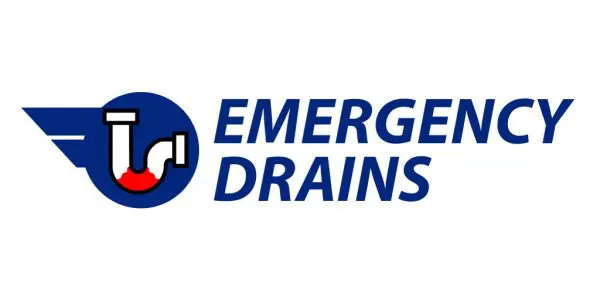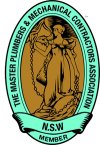Every homeowner knows the frustration of dealing with plumbing issues, but recognising the signs of blocked drains early can prevent them from turning into a full-blown crisis. Early detection is key to avoiding costly and inconvenient repairs.
The key signs of blocked drains include unpleasant odours that indicate rotting debris inside the pipes, slow draining water in sinks or bathtubs, gurgling sounds from the drains and fluctuating water levels.
Let’s uncover more of these tell-tale signs that suggest your drainage system might be compromised.
What Are The Signs of Blocked Drains? – A Quick Guide
Spotting the early signs of a blocked drain can save you from the headache of major plumbing issues. Foul odours, slow drainage and unusual noises are just the beginning. If you notice water slowly backing out of a sink or hear gurgling sounds, it’s time to take action. These symptoms often suggest a buildup of debris or even a deeper blockage affecting your home’s sewage system.
Ignoring these signs can lead to more significant and costly problems. Addressing them promptly ensures that your home remains clean, comfortable and free from potential water damage.
Get Immediate Help with Your Blocked Drains If You Are In Sydney
Don’t let a blocked drain disrupt your day or damage your property! If you’re facing sudden plumbing issues, our expert blocked drain services are just a call away. We provide fast, efficient and reliable solutions to ensure your drainage problems are solved without hassle. Our team uses the latest tools and techniques to diagnose and fix blockages quickly, minimising damage and inconvenience.
Whether it’s a simple fix or a complex issue, we’re here to help you 24/7. For immediate assistance, call us at 1300 524 474 or visit our Contact Us page. Your peace of mind is just a phone call away!
10 Signs of Blocked Drains
Recognising the signs of a blocked drain early can save you time and money, as well as help prevent potential damage to your home. Here, we will explore the most common signs of drainage issues, offering practical advice for detection and initial responses.
1. Slow-Draining Sinks and Bathtubs
One of the clearest signs that you may have a blocked drain is when water drains more slowly than usual from your sinks and bathtubs. This problem is often caused by accumulations of hair, soap residue and other debris which can form clogs within your pipes. Regular cleaning of drain stoppers and cautious disposal of non-soluble materials can help prevent this issue.
In addition to causing inconvenience, slow drainage can lead to bigger problems, such as water pooling and increased stress on your plumbing systems. If not addressed, these clogs can escalate, leading to complete blockages that may require professional intervention.
2. Gurgling Sounds from Drains
Gurgling sounds coming from your drains are a tell-tale sign of potential blockages. This noise occurs when air, which should normally escape through vent pipes, gets trapped by water flowing past a blockage and creates bubbles that produce gurgling as they escape. These sounds are an early warning that should not be ignored.
Addressing gurgling noises early can prevent more significant blockages. Regularly inspecting and maintaining your plumbing system can help identify and remove minor blockages before they become severe.
3. Unpleasant Odours Coming from Drains
A foul odour arising from your drains can be a disturbing indicator of a blockage. This smell is typically caused by the buildup of waste materials and bacteria in the pipes. Food debris, grease and other organic matter can decompose, releasing unpleasant smells. To mitigate these odours, it’s crucial to maintain clean drains and use cleaners that can break down organic materials without damaging your plumbing.
4. Water Backing Up
When water backs up out of a drain, it is a direct and alarming sign of a blockage. This usually means that a clog is preventing water from flowing through the pipes properly, causing it to flow backward and emerge where it can. If water backs up regularly, it’s important to top using the affected fixtures and contact a professional plumber to investigate the cause and clear the blockage before more serious flooding occurs.
5. Frequent Toilet Clogs
Toilets that clog frequently are often an indication of deeper issues within your sewage system. Occasional clogs can occur, but regular issues may suggest larger blockages or even problems with your main sewer line.
Using too much toilet paper or flushing non-degradable items can exacerbate this problem. If plunging doesn’t regularly clear these clogs, it may be time to call a professional.
6. Changes in Flush Efficiency
If you notice changes in the efficiency of your toilet’s flush, such as it flushing slower or needing multiple flushes to clear, this could indicate a partial blockage in your drain system. Reduced water pressure can also contribute to this problem and affect the overall functionality of your plumbing system. Monitoring and comparing the usual performance of your toilets can help you detect these changes early, potentially saving you from more extensive repairs.
7. Overflowing Drains
External drains that overflow, especially during rain, indicate a blockage that is preventing water from flowing away as intended. This can cause water to back up and overflow onto your property, creating potential hazards and damage. Clearing debris and leaves from the areas around these external drains can prevent such blockages, and installing guards can help keep larger items from entering the drainage system.
8. Pools of Water in the Garden
Unusual pools of water in your garden can suggest issues with your outdoor drainage system. These can be due to leaks or blockages that prevent water from draining properly, which leads to accumulation in low areas. Regularly inspecting the drainage routes in your garden for signs of disruption or blockage can prevent these pools from forming and protect your landscape from water damage.
9. Rising Water Bills
An unexplained increase in water bills can often be traced back to leaks or blockages that cause overuse of water. For instance, a hidden leak after a blockage can lead to continuous water flow, which adds up over time.
Monitoring your water bill and comparing it with past months can help you spot such anomalies. Additionally, using water usage monitoring systems can provide real-time alerts to sudden spikes in usage, indicating potential leaks or blockages.
10. Damp or Mould on Walls
The presence of dampness or mould on walls or ceilings can indicate a drainage problem, where water from a blocked drain is redirected or seeping through the structure of your home. This moisture creates ideal conditions for mould growth and can lead to significant structural damage if not addressed. Inspecting your home for signs of moisture and addressing any visible mould immediately can help maintain the structural integrity and health of your living environment.
Summing Up
Staying vigilant for the signs of blocked drains and addressing them promptly can greatly minimise the risk of severe plumbing disasters. From foul smells to unexpected water pooling, each sign is a clear indicator that your drainage system needs attention. Regular maintenance, such as cleaning drains and being cautious with what goes down them, can help keep your plumbing in optimal condition. Remember, when in doubt, consulting a professional can provide peace of mind and prevent further damage to your home’s plumbing infrastructure.



